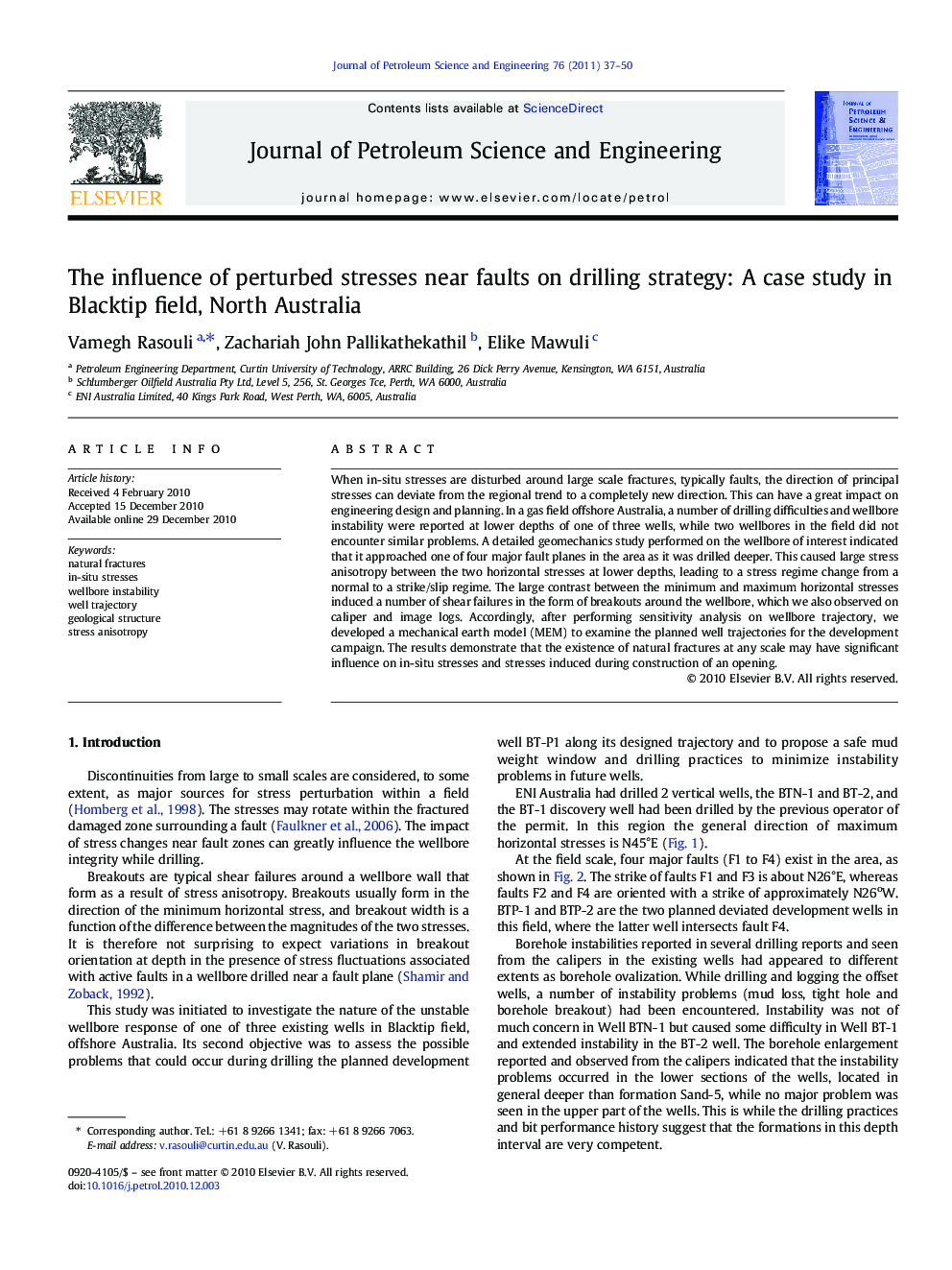| Article ID | Journal | Published Year | Pages | File Type |
|---|---|---|---|---|
| 1755716 | Journal of Petroleum Science and Engineering | 2011 | 14 Pages |
Abstract
When in-situ stresses are disturbed around large scale fractures, typically faults, the direction of principal stresses can deviate from the regional trend to a completely new direction. This can have a great impact on engineering design and planning. In a gas field offshore Australia, a number of drilling difficulties and wellbore instability were reported at lower depths of one of three wells, while two wellbores in the field did not encounter similar problems. A detailed geomechanics study performed on the wellbore of interest indicated that it approached one of four major fault planes in the area as it was drilled deeper. This caused large stress anisotropy between the two horizontal stresses at lower depths, leading to a stress regime change from a normal to a strike/slip regime. The large contrast between the minimum and maximum horizontal stresses induced a number of shear failures in the form of breakouts around the wellbore, which we also observed on caliper and image logs. Accordingly, after performing sensitivity analysis on wellbore trajectory, we developed a mechanical earth model (MEM) to examine the planned well trajectories for the development campaign. The results demonstrate that the existence of natural fractures at any scale may have significant influence on in-situ stresses and stresses induced during construction of an opening.
Keywords
Related Topics
Physical Sciences and Engineering
Earth and Planetary Sciences
Economic Geology
Authors
Vamegh Rasouli, Zachariah John Pallikathekathil, Elike Mawuli,
